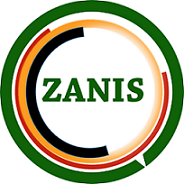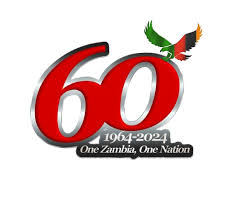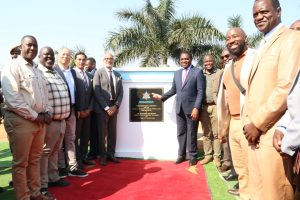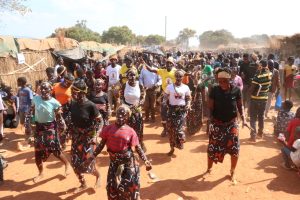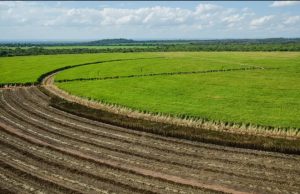By Innocent Daka
Forty-four years after his death, the gallant freedom fighter and politician Simon Mwansa Kapwepwe finally has his life history immortalised in a museum that opened on August 3, 2024, under his name in Chinsali district, Muchinga Province.
The museum, a former house for the freedom fighter, is an initiative by his children with the support of institutions and individuals inspired by his principles and values.
It has been set up in a smaller of the two roundhouses built in the 70s, adjacent to a rocky hill where the late Simon Mwansa Kapwepwe was buried in an ox skin when he died on January 26, 1980.
Refurbished, the four sizable rooms in the roundhouse now pass for a beautiful historical place preserving the memories and treasured artifacts,carefully curated to relive the life of Simon Mwansa Kapwepwe.
On display are a gallery of pictures and text boards on the walls, a glass-table display of his written letters, and certificates among other political articles, besides a video room for his recorded speeches.
There is also a special place for Simon Mwansa Kapwepwe’s treasured wooden cabinet of books, mini typewriter, published works as an author, art figurines, and a favourite black leather reclining chair.
Senior Chief Nkula of the Bemba people in Chinsali, who graced the opening of the museum, described the late Simon Mwansa Kapwepwe as a freedom fighter, a patriot and a fearless man.
The Senior Chief said the late Simon Mwansa Kapwepwe was also a good governance activist and traditionalist who believed in the respect of humankind.
“Today we gather here to launch the museum for the preservation of our history, art and culture for the future generations to come and refer to,” Chief Nkula said.
The traditional ruler urged museum visitors to reflect on the life of Simon Mwansa Kapwepwe, a freedom fighter, educator, and truth advocate.
Chinsali Acting District Commissioner Brenda Silwembe says that the Simon Mwansa Kapwepwe Museum will serve as a repository of history, a celebration of his achievements and an inspiration to the future generations.
Ms Silwembe thanked the Kapwepwe family for sharing their father’s legacy through the museum, which will educate, motivate, and unite the nation.
“Let us cherish this museum as a symbol of collective heritage, may it foster a deeper understanding of our history, promote cultural preservation and inspire leadership,” Ms Silwembe said.
Institutions, family members, and individuals who contributed to the realisation of the museum shared their views on the life of the late Simon Kapwepwe as their inspiration.
Access Bank Chinsali Branch Acting Manager Happy Kaonga said the financial institution was proud to be part of making the museum a reality, as both a memorial for Mr Kapwepwe’s legacy and an archive of knowledge, art, culture and history.
He said the bank committed to supporting the museum initiative as it aligns with its values of being an African brand that respects culture and traditions.
“It is through understanding our past that we can build an informed and empowered future,” he said.
Zanaco Bank Chinsali Branch Manager Ligio Tembo eulogised Simon Mwansa Kapwepwe as a freedom fighter whose name will live forever, resonating with the bank’s own philosophy of resilience.
Mr Simon Mwansa Kapwepwe was a freedom fighter who became Zambia’s first foreign affairs minister and served as vice president and minister of finance from 1967 to 1970.
He also served as minister for home affairs, and minister for provincial and local government and culture before leaving politics in 1977.
The museum in his name comes only two months before Zambia celebrates the diamond jubilee of its independence on October 24 under the theme “60 Years Strong: Honouring Our Heritage and Embracing the Future”.
Chileshe, the daughter of the late Simon Mwansa Kapwepwe, remembers her father’s significant contributions to Zambia’s freedom struggle and the development of the nation’s symbols of identity.
“Apart from being involved in the freedom struggle, he was involved in the design of the plaque of the country of Zambia—the coat of arms and the national anthem, and ultimately he coined the name Zambia for this newly independent country,” Ms Chileshe Kapwepwe said.
She reminisced that independence brought a sense of identity, and her father was very particular in how he dressed because he believed it identified who he was and what he stood for.
She recalls that her father first appeared wearing Togas in the 1960s while addressing public rallies in Luanshya, Chingola and Ndola, following his visit to Ghana to attend that nation’s independence.
“His dress signalled a break from the Western influence of colonial masters, preferring an African cultural style of dress,” Ms Kapwepwe said.
Ms Kapwepwe described her father’s life as one full of diverse experiences, adding that this is why as a family they decided to exhibit everything in the museum so that people can truly grasp the principles and clear values he embraced.
“I think it’s testament to his conviction and beliefs that 44 years later we are standing here and still remembering him, what he believed and what he taught us,” she said.
To help set up the museum professionally for an exciting experience of Simon Mwansa Kapwepwe life, the family worked with 29-year-old curator, Ng’onga Silupya, an art enthusiast, passionate about cultural decolonization.
Ms Silupya shares that it was more than an honour to her to have been part of the project to bring the museum together.
“Not just an honour, I enjoyed every step that we had to take to ensure the success of this project, simply because I’m passionate about culture and art and those are some of the critical things that Kapwepwe focused on,” she said.
Ms Silupya notes that the museum, the first of its kind to celebrate an individual freedom fighter in the country, was also worth a project to undertake.
This, she adds, is because of her interest in the country’s heritage, its preservation, decoloniality and how Zambia came to be and who contributed to its liberation.
“Because I was born in the postcolonial era, it makes me curious to learn about the past—the history of Zambia, the heroes and I feel excited to be able to tell the story of these freedom fighters through curated exhibitions,” Ms Silupya said.
She has advised that a way to honour the country’s freedom fighters is by documenting their stories and establishing museums, like the one in Chinsali.
“Yes, this is the first and it is a very unique project and I feel Simon Mwansa Kapwepwe Museum is one of its kind in Zambia to be specifically made for one individual to remember him, to tell the story of his life and political career,” said Ms Silupya.
She adds that museums provide the public an opportunity to learn and be exposed to important knowledge, particularly young people who can learn about the history of Zambia and the individuals who have influenced it as a nation.
For Ms Silupya, the establishment of the Kapwepwe Museum serves as a starting point for more projects of its kind across Zambia.
“It sets as an example of what is possible and what could be done and that there isn’t a limit to how far we can go to remembering and retelling these stories of our freedom fighters,” she said.
She adds: “I feel if this can be done here in Chinsali, it can be done anywhere else especially recognising the important people that contributed to the Independence struggle as we celebrate 60 years this October.”
